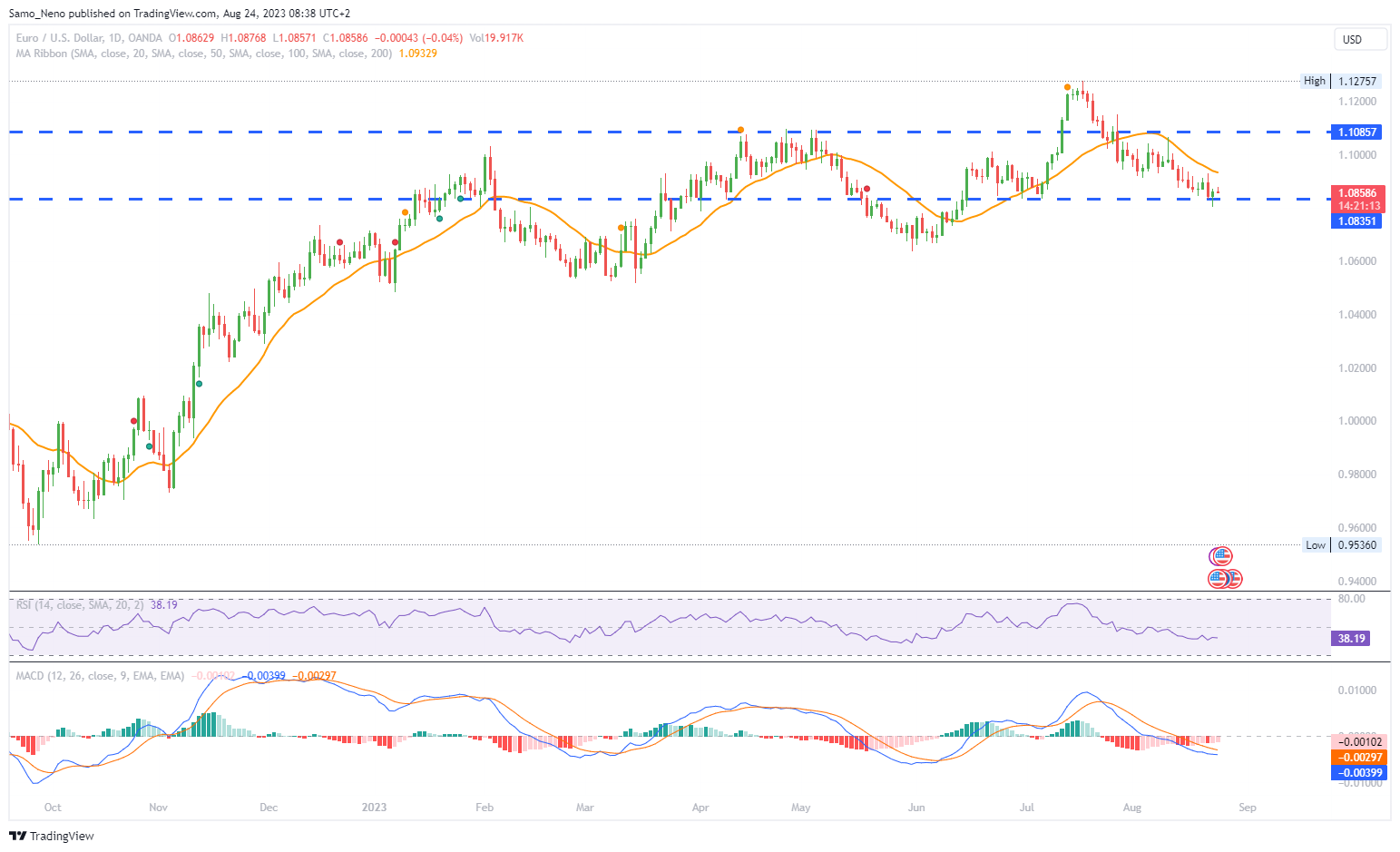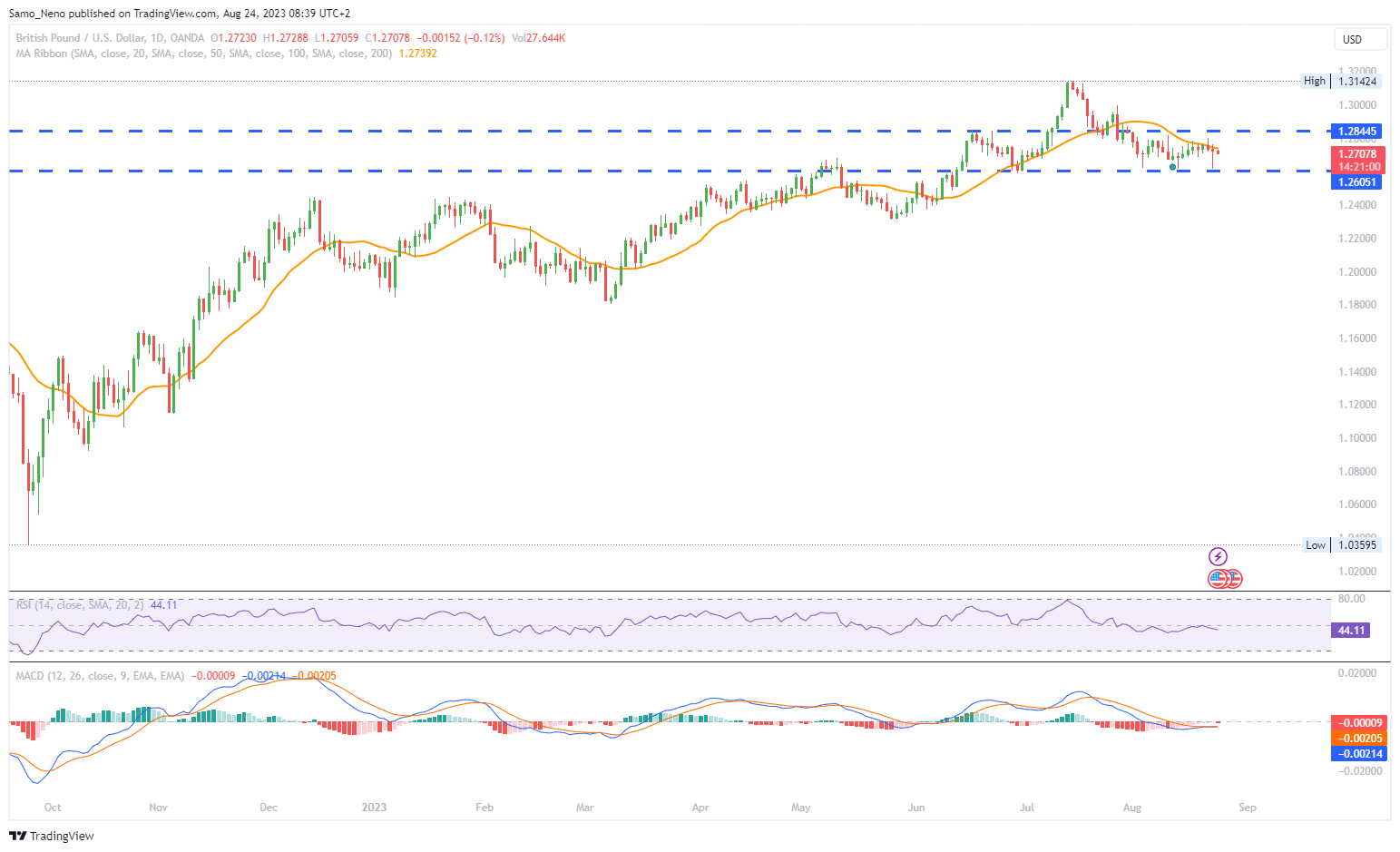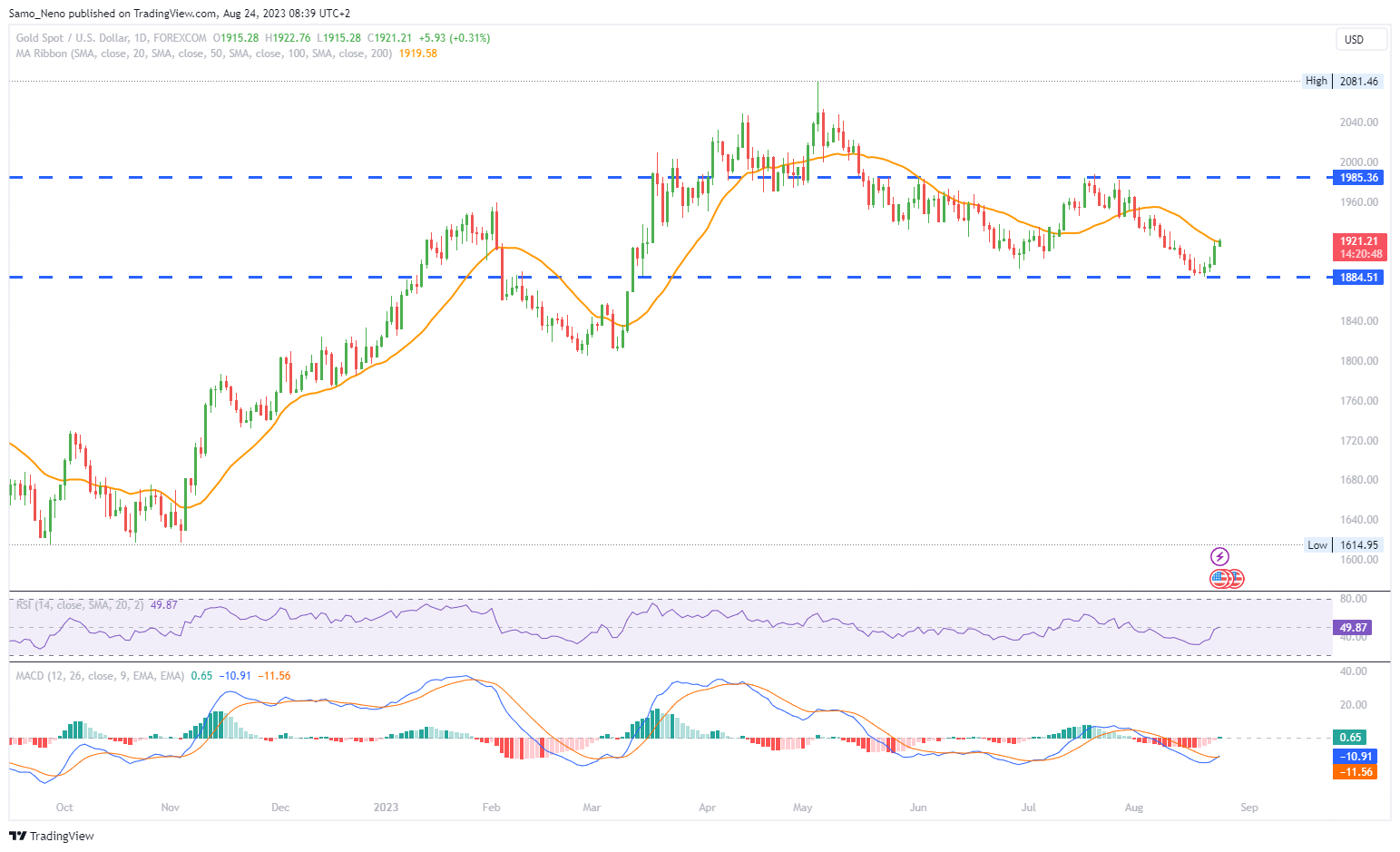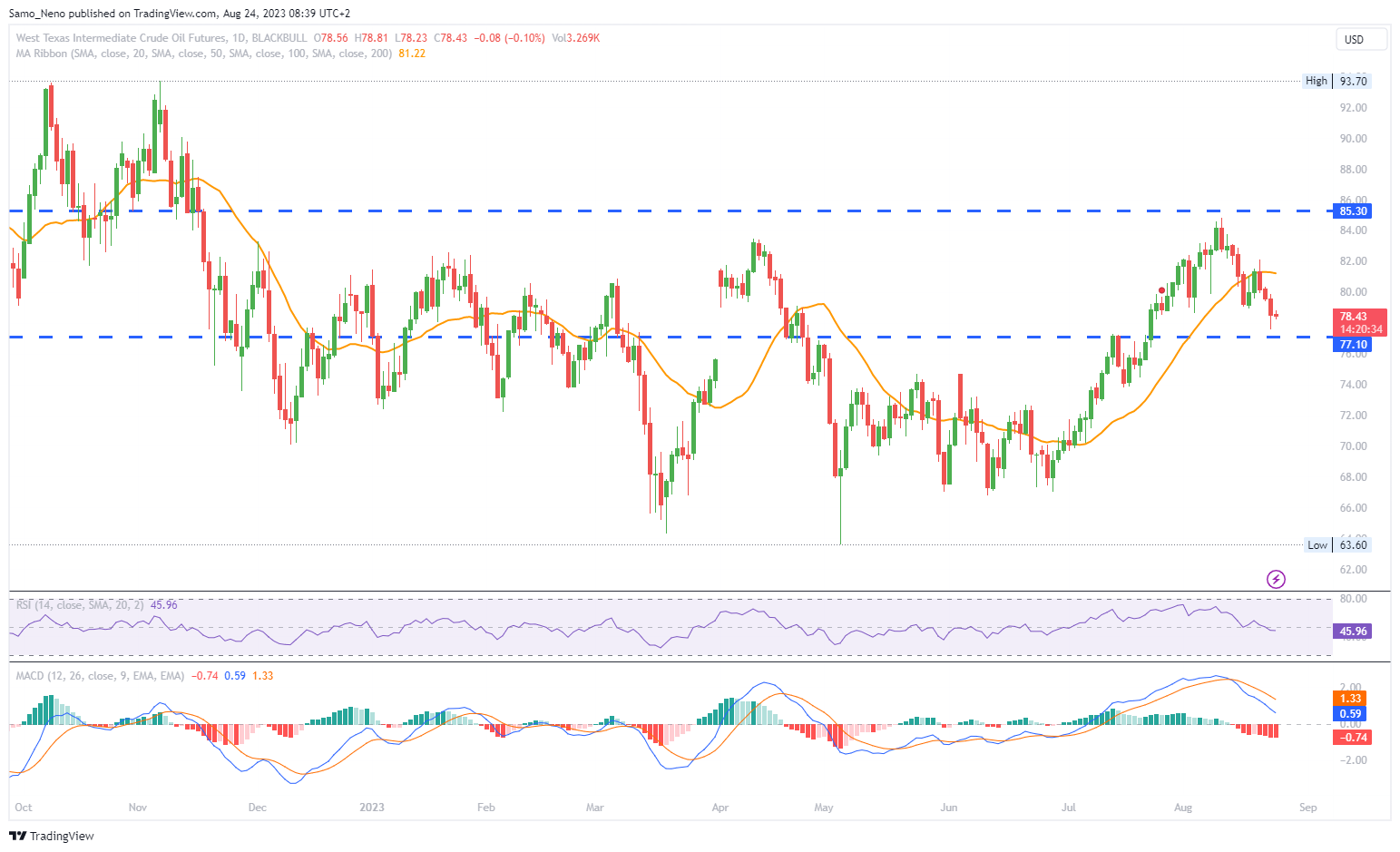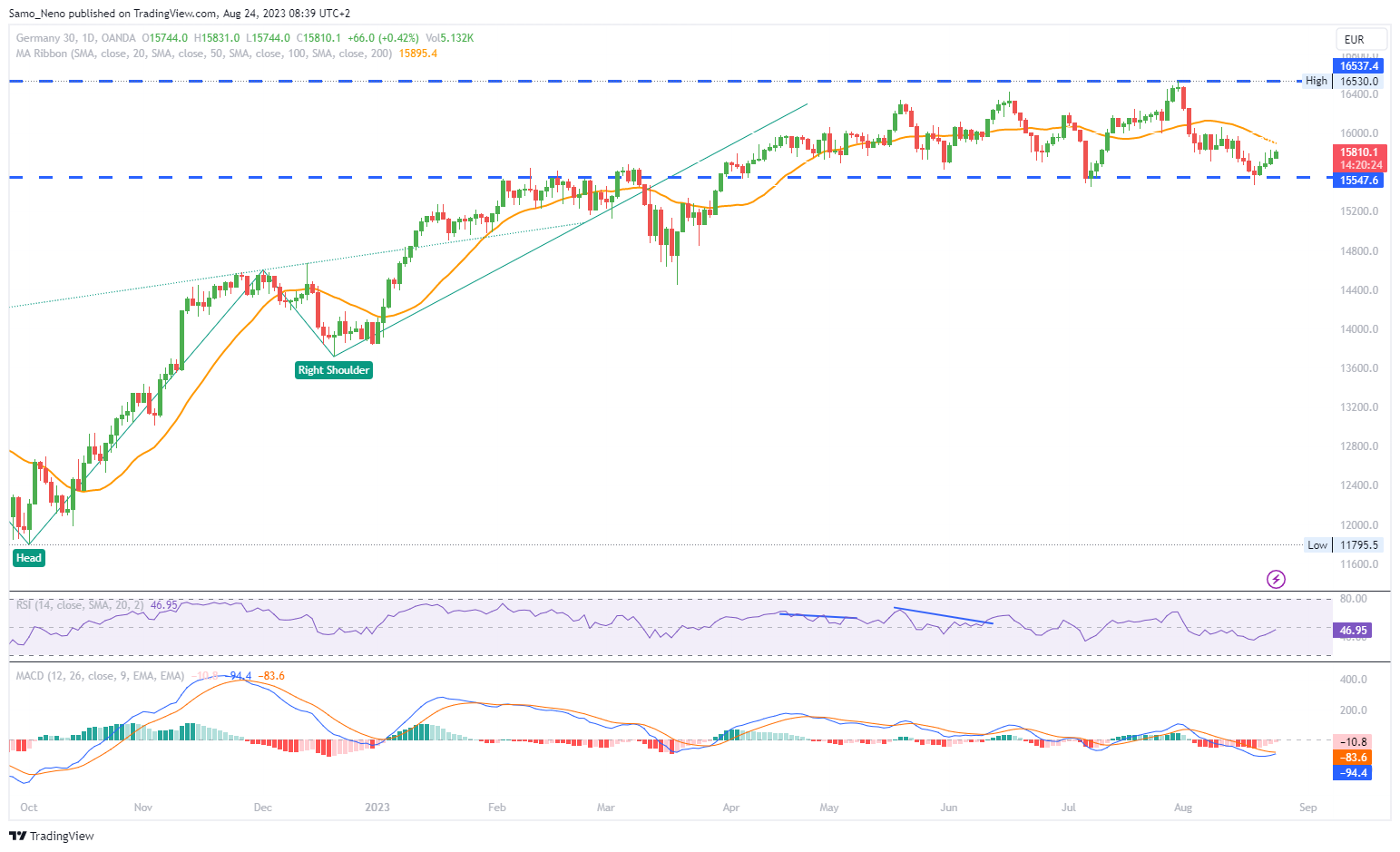EURUSD
- EUR/USD found support at the critical 200-day Simple Moving Average (SMA) around 1.0800. This bounce off a significant level has the potential for further gains, as indicated by the daily chart analysis.
- The Euro's decline was triggered by the release of preliminary August PMIs for the Eurozone. The Composite PMI dropped from 48.6 to 47, falling below the anticipated 48.5. Notably, the Services PMI dipped into contraction territory at 48.3, while the Manufacturing PMI showed an unexpected improvement, rising from 42.7 to 43.7.
- Adding to the concerns, the preliminary EZ Consumer Confidence slipped from -15.1 to -16, falling short of the market consensus at -14.3. These figures collectively dampened the prospects for a rate hike from the European Central Bank (ECB) at the upcoming September meeting, subsequently impacting the Euro.
- The latest economic data releases have tempered expectations for an imminent rate hike by the ECB, resulting in reverberations across the Euro's performance.
- The market's focus today will turn to the weekly Jobless Claims and Durable Goods Orders data releases, with these figures likely to influence the market sentiment and the Euro's trajectory.
Closing statement: In summary, the EUR/USD's recovery from crucial support at the 200-day SMA suggests potential for further gains. However, recent disappointing Eurozone PMI figures, particularly the contraction in the Services sector, coupled with declining consumer confidence, have weighed on the Euro's outlook. These factors have led to a reevaluation of expectations for an ECB rate hike in September. Today's focus lies on the upcoming economic data, which will play a role in shaping the market sentiment and the currency pair's direction.
GBPUSD
- GBP/USD is facing downward pressure following the release of downbeat preliminary PMI data from the United Kingdom (UK) on Wednesday. The disappointing figures are contributing to the pair's current bearish trend.
- Pound Sterling encountered significant selling pressure in response to the UK's preliminary PMI data, which painted a picture of diminishing economic momentum. The S&P Global/CIPS Manufacturing PMI dropped to 42.5 (flash estimate) for August, and the Services PMI slumped to 48.7 from 51.5 in July.
- In the US, Wednesday's data release showcased a decline in the S&P Global Composite PMI from 52 to 50.4. The Manufacturing PMI also took an unexpected turn, dropping from 49 to 47, contrary to the expected modest increase to 49.3. The Services PMI followed the trend, falling from 52.3 to 51.
- As a reaction to the PMI data, the US Dollar experienced losses across the board, sparking a corrective movement. This has contributed to the shifts observed in currency pairs like GBP/USD.
- A separate report highlighted an improvement in New Home Sales in the US during July, with the annual rate reaching 714K, compared to the previous figure of 684K.
| SMA (20) | Slightly Falling |
|
| RSI (14) | Neutral | |
| MACD (12, 26, 9) | Neutral |
Closing statement: GBP/USD is encountering downward pressure primarily due to the discouraging preliminary PMI data released from the UK, reflecting a loss of momentum in the economy. Conversely, the US Dollar has experienced losses following unexpected contractions in US PMI figures. These developments have triggered a corrective movement in the Dollar, influencing the performance of GBP/USD. The pair's movements will likely continue to be influenced by economic data and market sentiment.
GOLD
- Gold is extending its recovery for the fourth consecutive day, nearing two-week highs around $1,920 this Thursday. This upward trend follows a period of decline that pushed the precious metal to five-month lows.
- The United States Dollar (USD) is in retreat, as are US Treasury bond yields. This retreat in both the USD and bond yields is providing support to the XAU/USD price.
- According to CME Group’s FedWatch Tool, markets have almost priced in a pause from the Federal Reserve next month. There's a 57.7% probability that the Fed will maintain its current stance in November, up from the previous 54%. Additionally, expectations for rate cuts of 102 basis points next year have reemerged.
- The upcoming batch of US economic data, including Durable Goods Orders, weekly Jobless Claims, and regional business activity data, will be crucial for gauging the strength of the US economy and the potential direction of the Fed's policy.
- As the highly anticipated Jackson Hole Symposium approaches, there could be some profit-taking in the gold market as investors reposition their holdings. The symposium, starting this Thursday, will feature a speech by Fed Chair Jerome Powell on Friday, which could provide important insights into the future monetary policy path.
| SMA (20) | Falling |
|
|
||
| RSI (14) | Rising |
|
|
||
| MACD (12, 26, 9) | Slightly Rising |
|
Closing statement: Gold's recovery trend continues as it bounces back from five-month lows, benefiting from the retreat of the USD and US Treasury bond yields. Market sentiment is influencing rate expectations, while upcoming US economic data will likely shape perceptions of the US economy and the Fed's policy direction. Additionally, the impending Jackson Hole Symposium and Powell's speech hold significance for gold prices and market positioning.
CRUDE OIL
- Crude oil prices saw a slight decline in early trade on Thursday. This dip comes in response to disappointing economic data from key global economies and ahead of a significant speech by U.S. Federal Reserve Chair Jerome Powell scheduled for Friday.
- Recent manufacturing data from multiple purchasing managers' index (PMI) surveys presented a concerning outlook for the global economy. These reports signaled a decline in factory activity across various economies, fueling concerns about future oil demand.
- Japan reported a third consecutive month of shrinking factory activity in August. Meanwhile, Eurozone business activity, particularly in Germany, fell more than anticipated. The UK's economy appeared to be heading toward contraction, raising the risk of recession. The U.S. also showed sluggish business activity in August, with growth at its lowest since February.
- On the supply side, Iran's oil minister projected that the country's crude oil output would reach 3.4 million barrels per day (bpd) by the end of September, despite the ongoing presence of U.S. sanctions. This projection has the potential to impact global supply dynamics.
- Investors are keenly awaiting the speech by U.S. Federal Reserve Chair Jerome Powell scheduled for Friday. This speech is anticipated to provide crucial insights into the future trajectory of interest rates, which could have a substantial impact on oil markets.
| SMA (20) | Slightly Falling |
| ||
| RSI (14) | Slightly Falling |
|
||
| MACD (12, 26, 9) | Falling |
|
|
Closing statement: Crude oil prices have experienced a slight decrease due to disappointing economic data from major economies, raising concerns about future oil demand. Manufacturing indicators and sluggish economic growth have contributed to a cautious market sentiment. Additionally, developments in oil supply, particularly Iran's projected output, are influencing market dynamics. The upcoming speech by Powell is anticipated to provide important cues for oil market participants, shaping expectations for interest rates and potentially impacting oil prices.
DAX
- Germany's stock market posted gains in the Food & Beverages, Financial Services, and Telecoms sectors at the close of Wednesday's trading session.
- The DAX index has maintained its winning streak for a third consecutive session, closing Wednesday's trading at 15,728 points.
- Germany's manufacturing sector Purchasing Managers' Index (PMI) exhibited a modest increase from 39.8 to 39.1. However, the services PMI took a substantial hit, dropping from 52.3 to 47.3, contrary to economists' forecasts of 38.7 and 51.5, respectively.
- The Eurozone's PMI data followed a similar pattern. The manufacturing PMI edged up from 42.7 to 43.7, while the services PMI declined from 50.9 to 48.3.
- While there are no significant economic indicators from the euro area influencing the DAX today, attention is drawn to NVIDIA (NVDA) earnings, which are expected to impact tech stocks.
| SMA (20) | Slightly Falling |
|
| RSI (14) | Slightly Rising |
|
| MACD (12, 26, 9) | Slightly Rising |
|
Closing statement: The DAX index experienced gains driven by positive performance in specific sectors. The index's winning streak continued for the third session. PMI data from both Germany and the broader Eurozone displayed mixed results, with manufacturing showing modest improvements while services took a hit. The absence of significant euro area economic indicators today shifts attention to NVIDIA's earnings, which could impact the performance of tech stocks in the DAX.
